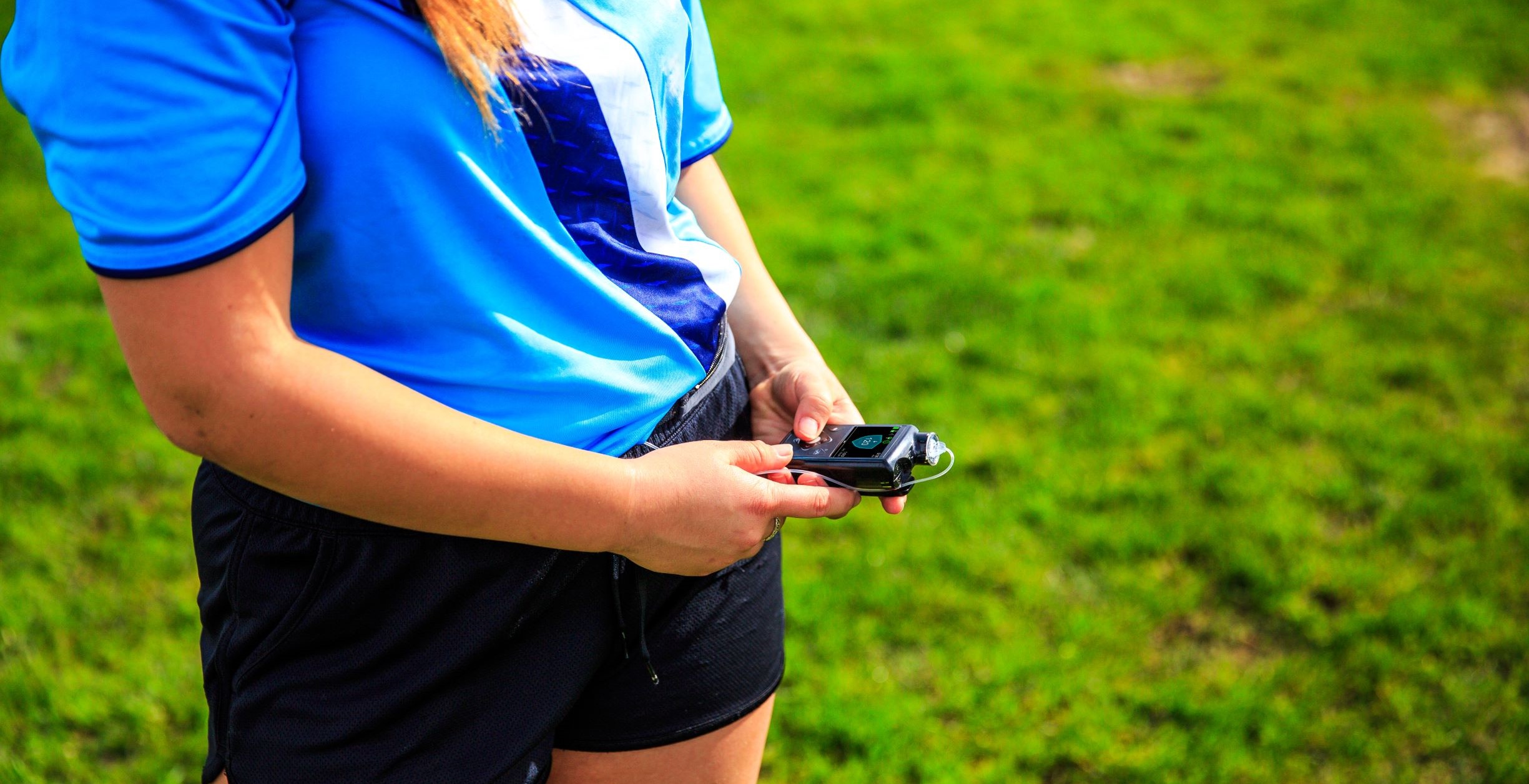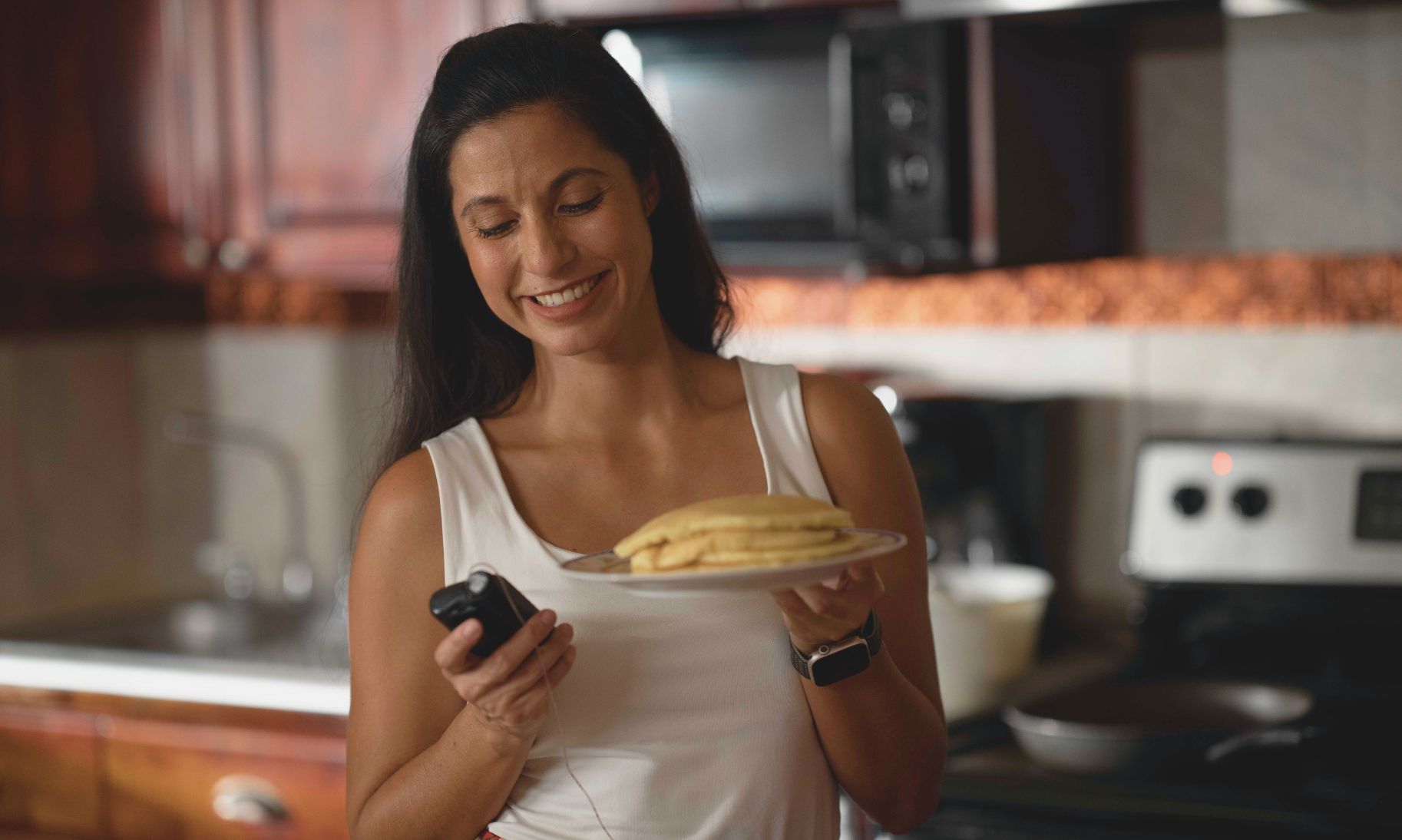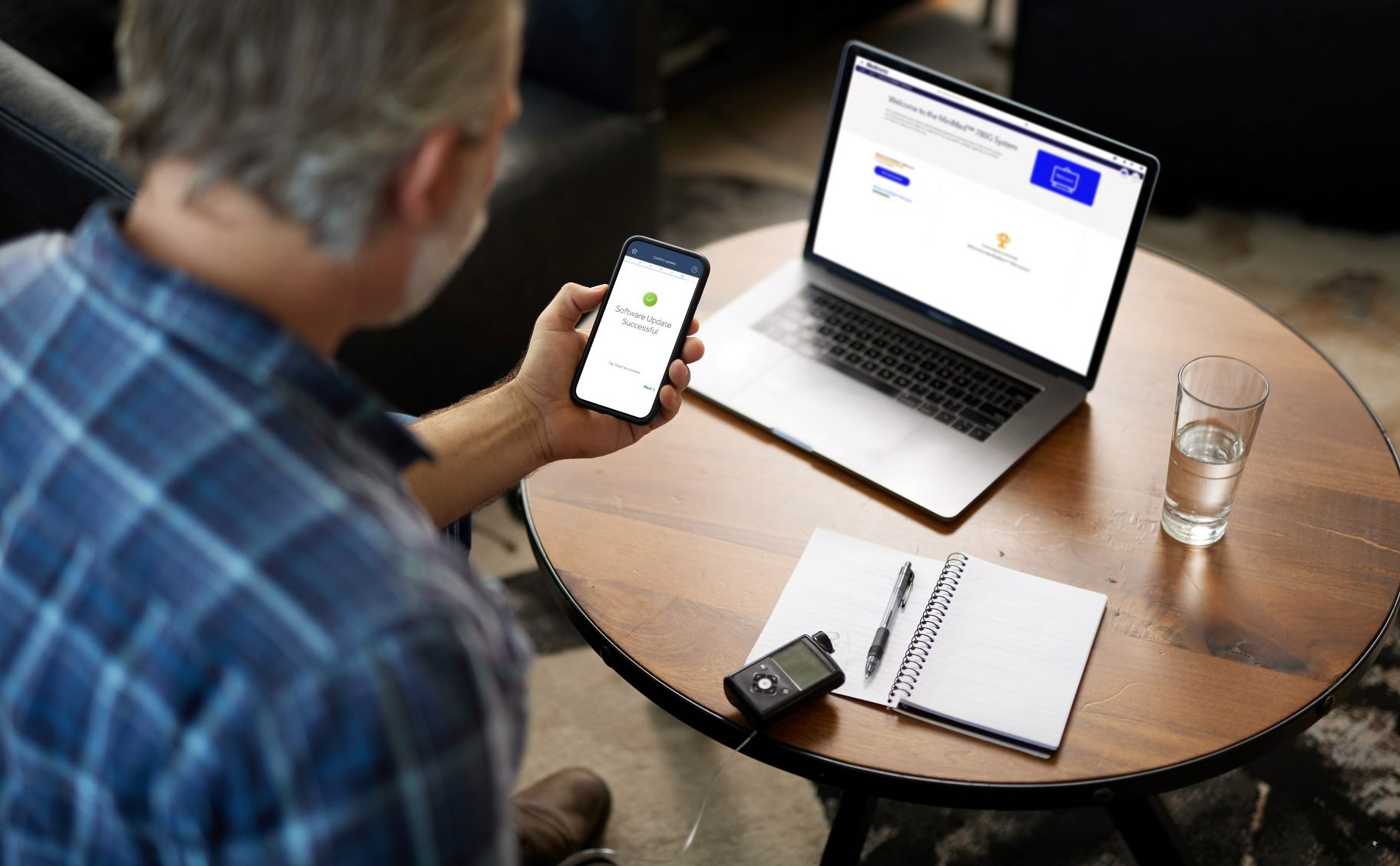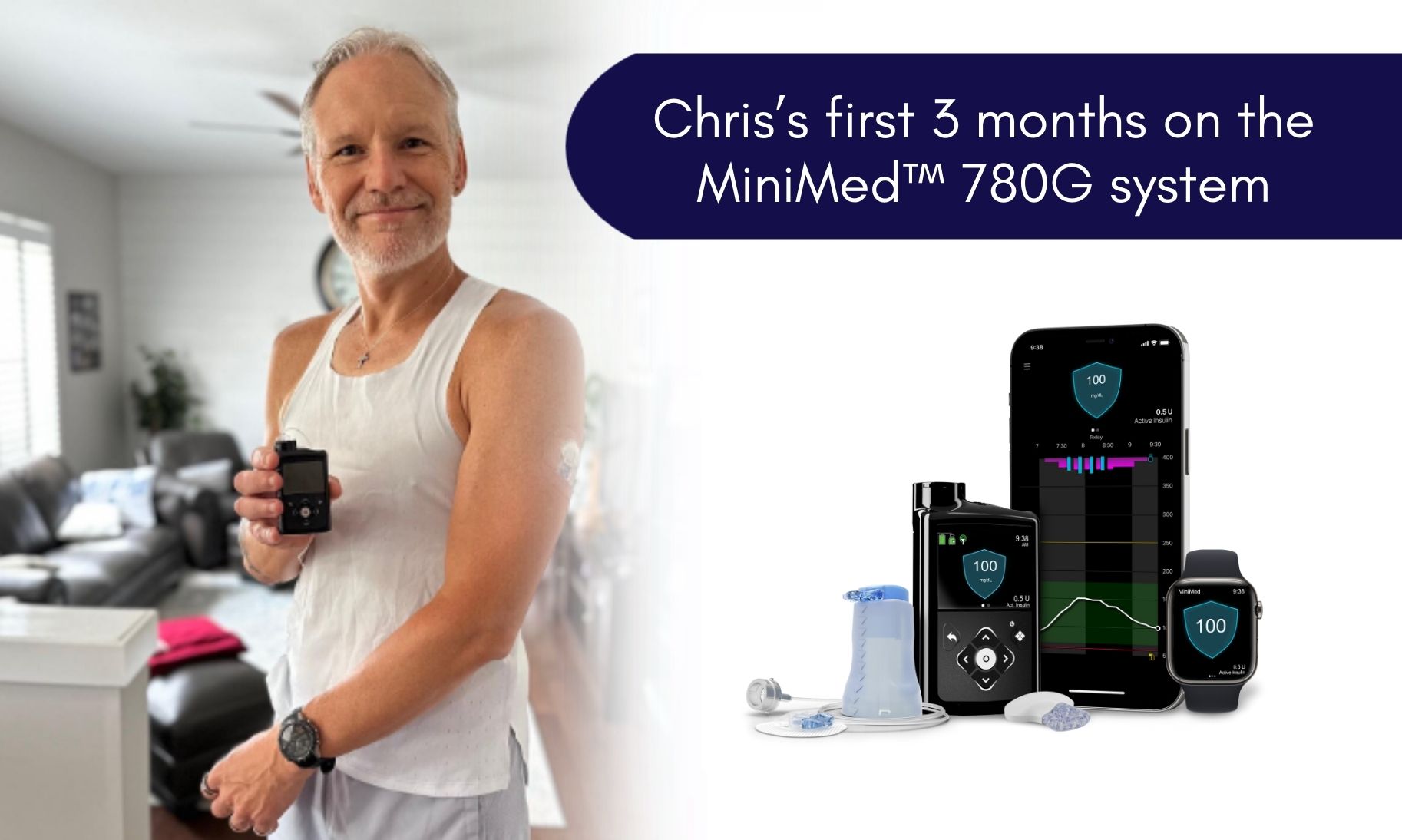7 tips for success with SmartGuard™ Auto Mode

The MiniMedTM 770G system and the MiniMedTM 670G system with SmartGuardTM Auto Mode are systems that automatically adjust basal insulin to keep you in range and help to prevent highs and lows*. When using Auto Mode, you might find there are changes in the way you manage your diabetes. To help you, we created a collection of top tips for the best experience:
*Refers to SmartGuardTM Auto Mode. Some user interaction required. Individual results may vary.
Consider Sensor Placement
To get things started, when you first insert your sensor, consider trying a new area to see what works best for you.
- Ages 14+: abdomen and arms
- Ages 7-13: abdomen and buttocks
- Ages 2-6 (MiniMedTM 770G system only): abdomen and buttocks
Making sure your sensor is taped down well is critical for sensor performance. If you have allergies to the tape or need extra tape based on activity levels or the climate you live in, try using these tape tips or work with your healthcare team to find the best solution for you.
Keep 70-180 mg/dL in Mind
While SmartGuardTM Auto Mode uses a target of 120 mg/dL, its goal is to increase time spent between 70 and 180mg/dL without increasing your lows. To do this, the Auto Mode feature reviews your total daily dose over the past 6 days of insulin needs and adapts every day at midnight. This 6 days of data calculates the minimum and maximum hourly limits, which can transition you into Safe Basal if your insulin needs have changed. A quick fingerstick to confirm dosing is all your pump needs to transition you back into Auto Mode!
The pump’s algorithm determines every 5 minutes how much insulin to give by looking at your current sensor glucose, as well as where it’s been and where it’s going. It also looks at how much insulin is still active in your body. Calibrating 3-4 times a day, spread throughout the day at stable times, will help your pump have the most up to date information that it needs and help keep you in range.
Review Your Habits to Treat Lows
When it comes to lows, it’s recommended to treat as usual using the 15‐15 rule. Take 15 grams of rapid acting carbohydrates if BG is below 70, check  BG again in 15 minutes, and repeat if BG is still below 70. However, we’ve seen that some people find that they need to reduce the amount of carbs they use to treat lows since the pump stops the background insulin as glucose levels go down. Make sure to follow your healthcare team's treatment plan and consult with them before making any changes.
BG again in 15 minutes, and repeat if BG is still below 70. However, we’ve seen that some people find that they need to reduce the amount of carbs they use to treat lows since the pump stops the background insulin as glucose levels go down. Make sure to follow your healthcare team's treatment plan and consult with them before making any changes.
Consider Pre-Bolusing Before a Meal
By giving insulin before you eat, instead of when you begin eating the meal, you’ll give the insulin a head start to begin working. If you experience highs after eating, this could be a helpful habit to discuss with your healthcare team.
Look at New Things that Lead to Highs
You might also need to give insulin for things you didn’t before Auto Mode, like caffeine. For example, if you wake up and have a cup of black coffee, which contains no carbs, you might still see a rise in glucose readings. In this case, consider a small bolus to cover the rise in glucose from the coffee. As always, check with your healthcare team to see if you need to dose differently for this or any other foods and/or beverages. If you still see a pattern of highs after eating, speak with your doctor to see if your carb ratio needs to be adjusted.
Take Note of What Auto Mode Doesn’t Do
Remember that Auto Mode does not dose off of “patterns.” Auto Mode adjusts based on what you need every 5 minutes and cannot correct for large dose mismatches. For example, Auto Mode doesn’t know what you eat for breakfast or if you go to Zumba class every Tuesday. This is why it’s important to continue to input information (like carbohydrate grams or using the Temp Target mode).
Temp Target Might Help
Remember, the standard Auto Mode target is 120 mg/dL, and you can temporarily change your target to 150 mg/dL. The Temp Target feature is designed for any time you want less background insulin. In addition to exercise, this may include yard work, times of high stress, exams, driving, or drinking alcohol. Every person is different, but in general you could start the Temp Target 1‐2 hours before exercise and end it 1‐2 hours after.
If you find you are still dropping low during exercise, you may need to consider a combination of suspending your pump and/or consuming carbs to avoid the low altogether.
We hope you find these tips helpful. Which one is most helpful for you?
These tips are recommendations only. You should consult your healthcare team 1) before starting a new or changing your therapy plan and 2) before starting any exercise or nutrition program to determine if it is right for your needs.
MINIMED™ 770G SYSTEM WITH SMARTGUARD™ TECHNOLOGY
The MiniMed™ 770G system is intended for continuous delivery of basal insulin (at user selectable rates) and administration of insulin boluses (in user selectable amounts) for the management of type 1 diabetes mellitus in persons two years of age and older requiring insulin as well as for the continuous monitoring and trending of glucose levels in the fluid under the skin. The MiniMed™ 770G System includes SmartGuard™ technology, which can be programmed to automatically adjust delivery of basal insulin based on continuous glucose monitoring (CGM) sensor glucose values (SG) and can suspend delivery of insulin when the SG value falls below or is predicted to fall below predefined threshold values.
The Medtronic MiniMed™ 770G System consists of the following devices: MiniMed™ 770G Insulin Pump, the Guardian™ Link (3) Transmitter, the Guardian™ Sensor (3), one-press serter, the Accu-Chek® Guide Link blood glucose meter, and the Accu-Chek® Guide Test Strips. The system requires a prescription.
The Guardian™ Sensor (3) has not been evaluated and is not intended to be used directly for making therapy adjustments, but rather to provide an indication of when a fingerstick may be required. All therapy adjustments should be based on measurements obtained using a blood glucose meter and not on values provided by the Guardian™ Sensor (3).
All therapy adjustments should be based on measurements obtained using the Accu-Chek® Guide Link blood glucose meter and not on values provided by the Guardian™ Sensor (3). Always check the pump display to ensure the glucose result shown agrees with the glucose results shown on the Accu-Chek® Guide Link blood glucose meter. Do not calibrate your CGM device or calculate a bolus using a blood glucose meter result taken from an alternative site. It is not recommended to calibrate your CGM device when sensor or blood glucose values are changing rapidly, e.g., following a meal or physical exercise.
WARNING: Do not use the SmartGuard™ Auto Mode for people who require less than 8 units or more than 250 units of total daily insulin per day. A total daily dose of at least 8 units, but no more than 250 units, is required to operate in SmartGuard™ Auto Mode. |
WARNING: Do not use the MiniMed™ 770G system until appropriate training has been received from a healthcare professional. Training is essential to ensure the safe use of the MiniMed™ 770G system.
Pump therapy is not recommended for people whose vision or hearing does not allow recognition of pump signals and alarms. Pump therapy is not recommended for people who are unwilling or unable to maintain contact with their healthcare professional. The safety of the MiniMed™ 770G system has not been studied in pregnant women. For complete details of the system, including product and important safety information such as indications, contraindications, warnings and precautions associated with system and its components, please consult http://www.medtronicdiabetes.com/important-safety- information#minimed-770g and the appropriate user guide at http://www.medtronicdiabetes.com/download-library
MINIMED 670G™ SYSTEM
The Medtronic MiniMed™ 670G system is intended for continuous delivery of basal insulin (at user selectable rates) and administration of insulin boluses (in user selectable amounts) for the management of type 1 diabetes mellitus in persons, seven years of age and older, requiring insulin as well as for the continuous monitoring and trending of glucose levels in the fluid under the skin. The MiniMed™ 670G system includes SmartGuard™ technology, which can be programmed to automatically adjust delivery of basal insulin based on Continuous Glucose Monitor sensor glucose values and can suspend delivery of insulin when the sensor glucose value falls below or is predicted to fall below predefined threshold values. The system requires a prescription.
The Guardian™ Sensor (3) glucose values are not intended to be used directly for making therapy adjustments, but rather to provide an indication of when a fingerstick may be required. A confirmatory finger stick test via the CONTOUR®NEXT LINK 2.4 blood glucose meter is required prior to making adjustments to diabetes therapy. All therapy adjustments should be based on measurements obtained using the CONTOUR®NEXT LINK 2.4 blood glucose meter and not on values provided by the Guardian™ Sensor (3). Always check the pump display to ensure the glucose result shown agrees with the glucose results shown on the CONTOUR®NEXT LINK 2.4 blood glucose meter. Do not calibrate your CGM device or calculate a bolus using a blood glucose meter result taken from an Alternative Site (palm) or from a control solution test. It is not recommended to calibrate your CGM device when sensor or blood glucose values are changing rapidly, e.g., following a meal or physical exercise. If a control solution test is out of range, please note that the result may be transmitted to your pump when in the “Always” send mode.
WARNING: Medtronic performed an evaluation of the MiniMed™ 670G system and determined that it may not be safe for use in children under the age of 7 because of the way that the system is designed and the daily insulin requirements. Therefore this device should not be used in anyone under the age of 7 years old. This device should also not be used in patients who require less than a total daily insulin dose of 8 units per day because the device requires a minimum of 8 units per day to operate safely. |



